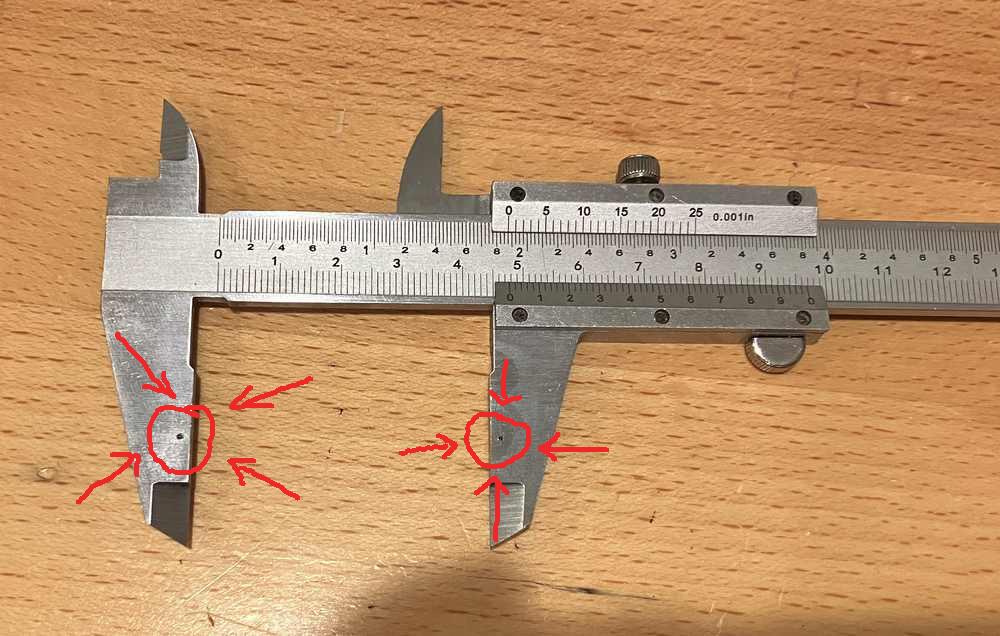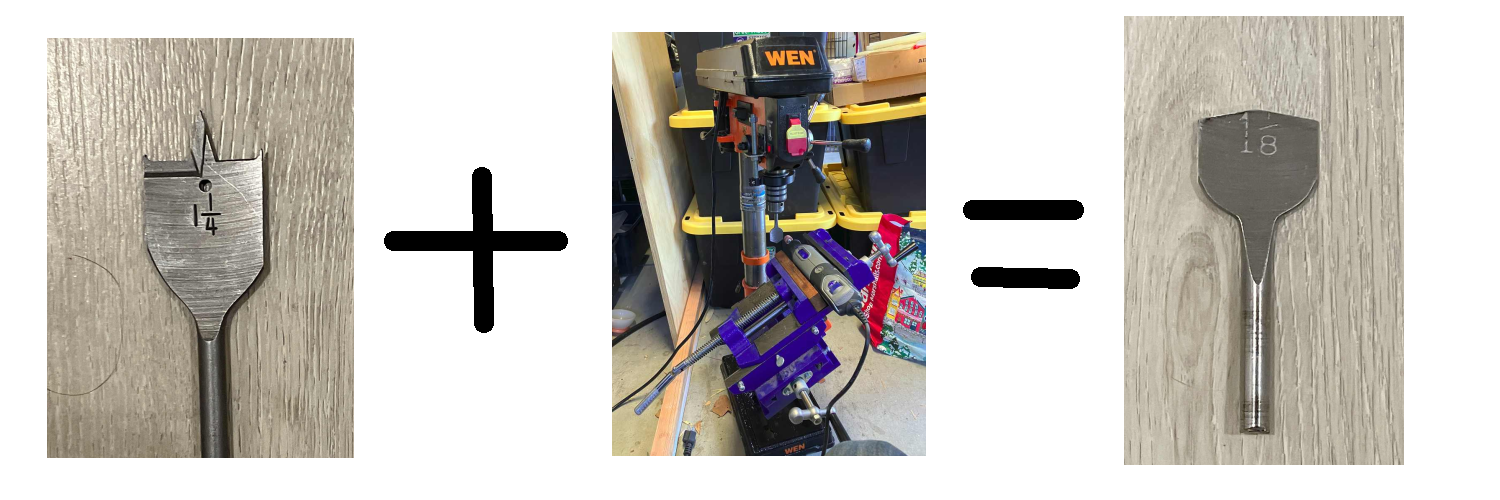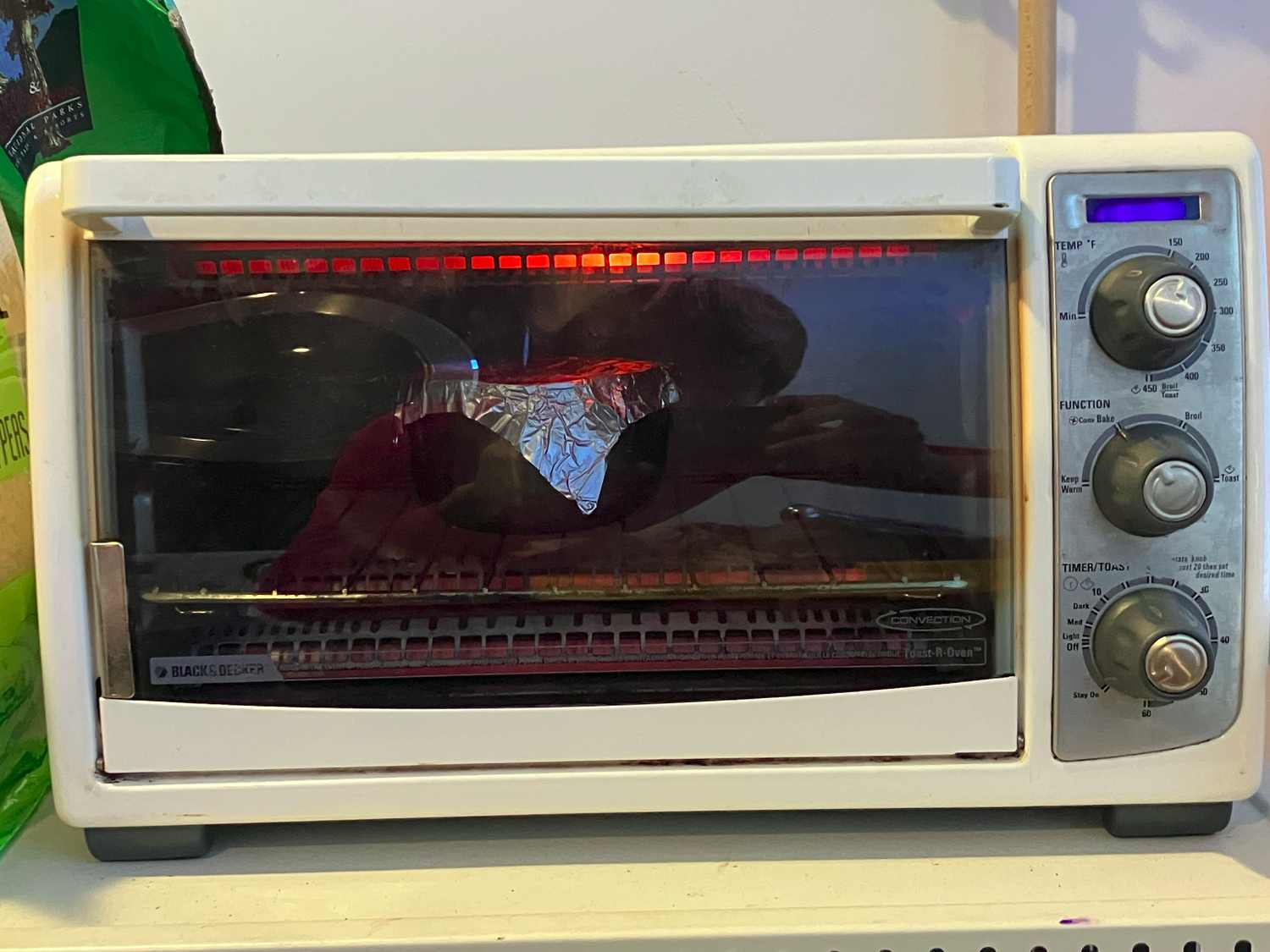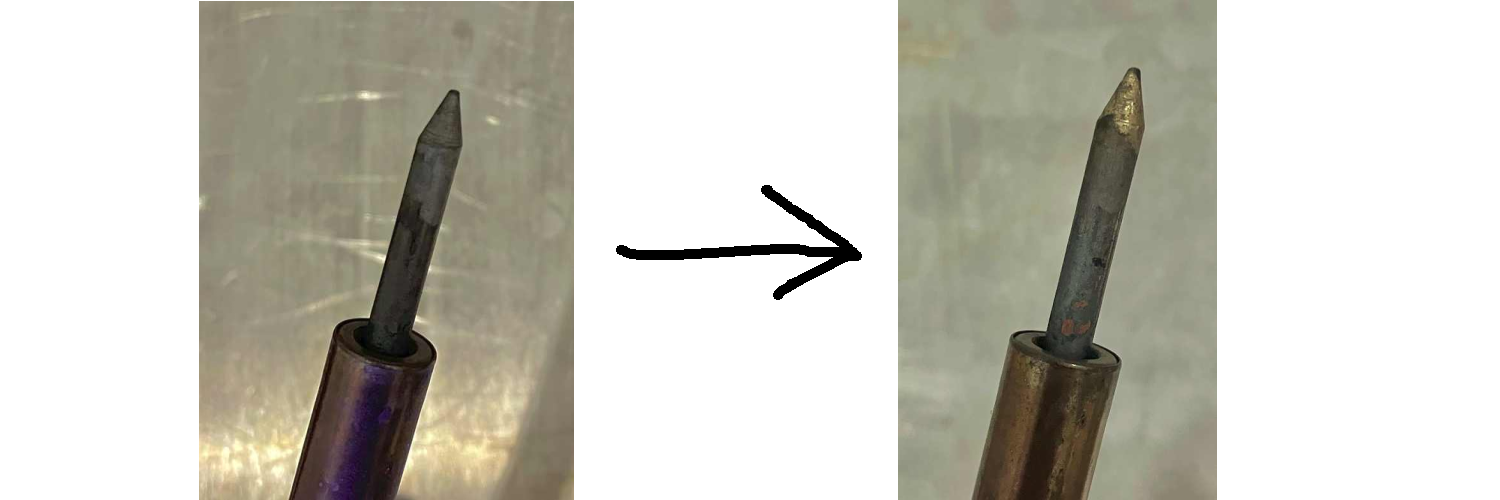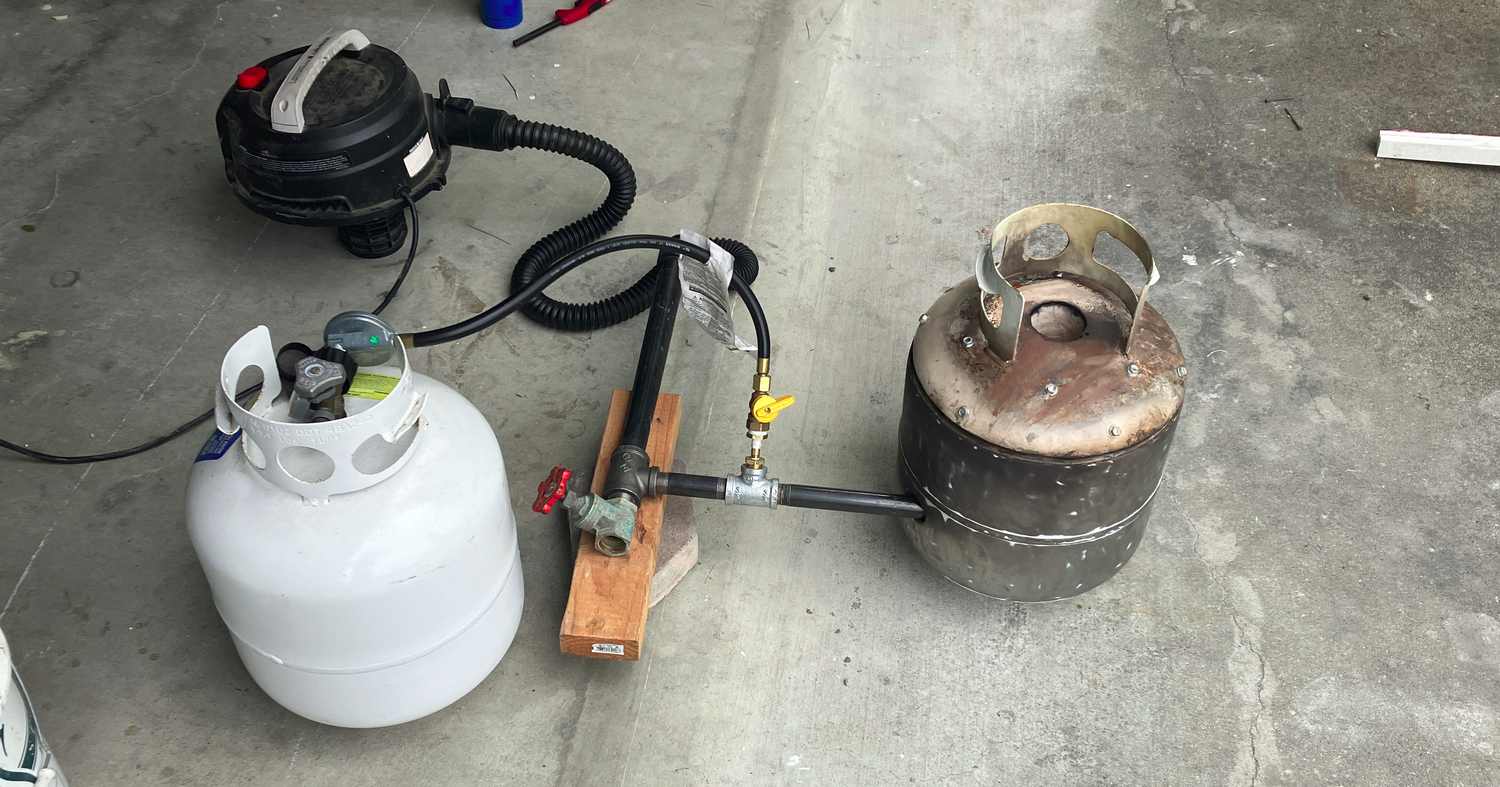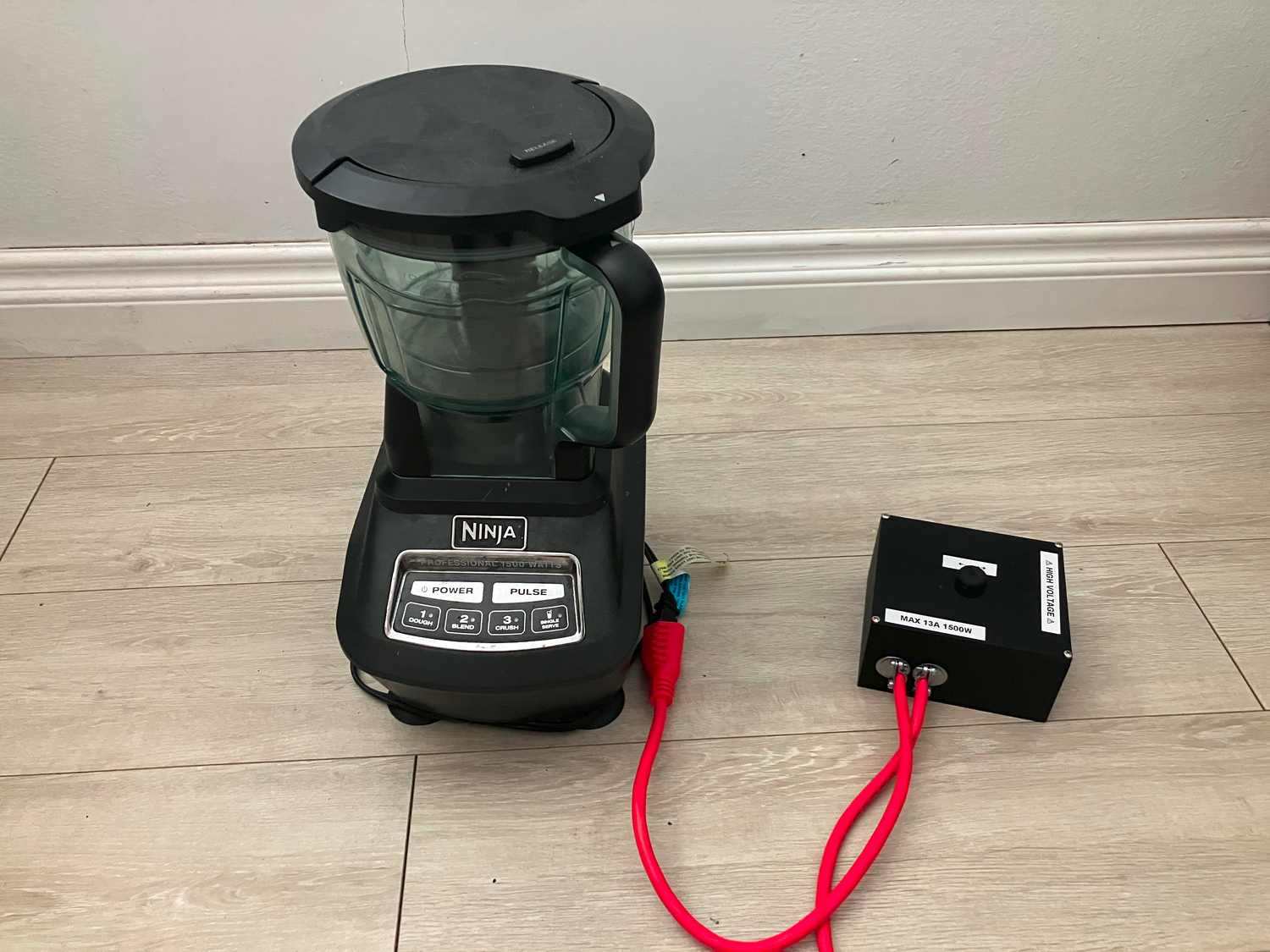-
“The Vernier Caliper… may be used for accurae settings of dividers and trammels. Near the zero mark on the beam is a tiny indentation in the center of a small circle, and on the sliding jaw is another small cone-shaped mark. Set the vernier to the dimension required and then adjust the points of the dividers or trammels, by “feel” or with the aid of an eyeglass, exactly in the two marks.” — Machine Tool Operation, Part I, Fourth Edition, by Burghardt and Axelrod Unfortunately, not many vernier calipers today retain this feature, since the manual lay-out (i.e. scribing …
-
I previously used my drill press as a strength tester. Now, with two modifications, it can grind spade drills! Modifications This tool grinder works by mounting a Dremel rotary tool in a cross slide vise and a tool in the drill chuck. Column Extension In some cases, tilting the table (discussed later) caused the original column height to be inadequate after mounting the cross slide vise and Dremel. Looking online I saw that people recommended extending the column with a length of automotive tail-pipe, so I measured my column, and quite luckily found a pipe at my local auto …
-
When a piece of dried clay is heated sufficiently, the water that is chemically bound to it is irreversibly driven off, and the clay particles bond covalently to each other. After this, the clay will no longer return to the plastic state if it gets wet. As it turns out, the temperature needed to dehydrate clays can be significantly lower than their firing temperature. According to this paper, it is between 400 °C and 600 °C for kaolins, but even lower for smectites — from 200 °C to 300 °C. Since the clay from my backyard is smectic, I was…
-
A common flux in soldering is zinc chloride solution. It is supposedly quite effective, though its corrosiveness makes it unsuitable for electronics. I tried using it as a tip cleaner for soldering irons that had oxidized to the point where they couldn’t be tinned with rosin-core solder. Zinc chloride (ZnCl2) is easy to make by yourself by dissolving zinc (Zn) in a jar of muriatic acid (HCl, 10M). The reaction was very vigorous for the first few minutes; the glass jar got noticeably warm, and steam came out of the jar. After a few hours I could still …
-
A problem I have struggled with in sand casting is mold tear-out. Even in patterns with generous draft angles, the sand very often gets torn out when the pattern is removed. Although charts of green sand mechanical properties versus moisture content, fineness, composition, etc. are available (for example in the US Navy’s Foundry Manual), the sand that I use is a bit different from industrial foundry sands in that it is much coarser, but has a higher proportion of binder, which is just clay soil from my backyard. I suspected that the binder may have been causing excessive pattern …
-
This Repair Café was held at the Museum of American Heritage from 11:00 AM to 3:00 PM, though I only stayed till 2:30. The first thing I worked on was an electric fly swatter whose battery wires had broken off, causing the owner to use it while it was plugged in to a charger (I’d assume some portable charger). At some point, the charger wire had gotten snagged and pulled the Micro USB charging port out with it. I looked for an old PCB with a charging port to salvage, but could not find one, so I decided (with the…
-
Introduction For the last year or so, I’ve been teaching myself sand casting. My metal of choice up until now has been zinc, because it is cheap and melts easily on a stove. I even built myself an electric stove out of an old air-fryer lid for melting zinc. So far, this has worked pretty well; the stove melts small amounts of zinc pretty quickly. But the stove doesn’t work too well when the weather is too windy, and zinc doesn’t have great mechanical properties: it’s brittle, weak, and dense. Wanting to melt other metals like aluminium and copper alloys…
-
This Repair Café took place at the Saratoga Library. There seemed to be a lot of people. The first item I received was a CD player/radio/speaker that wasn’t playing well. The CD player played very slowly and indistinctly, while the radio played only static. Listening to both through the headphone output produced the same effects. Suspecting that a loose belt might be at fault for the CD player (although the CD seemed to be spinning up alright), I decided to take it apart. However, all the wires and cables impeded removal of the circuit boards, which was required to get…
-
One of the greatest advantages of AC power over DC is the ability to change its voltage by way of a transformer. However, transformers are bulky and expensive, especially variable transformers that allow household AC voltage to be lowered to throttle various electronic devices. But you can cheat: instead of varying the voltage, you can switch the power on and off to “chop off” part of each AC half-wave, effectively varying the voltage (though the output is not perfectly sinusoidal), with results that are good enough for many applications. Theory I found this very helpful article describing most of the…
-
Sand-cast parts commonly have internal geometries (ex. holes) that are produced with cores, internal molds made of bonded sand that are inserted into the main mold. The Theory I found an excellent book of practical sand casting information in the 1958 US Navy Foundry Manual. Cores are usually only supported by the mold at a few points, so they must be quite strong to withstand their own weight, as well as the buoyant forces produced when they are submerged in molten metal. For this reason they are made of a bonded sand different from normal molding sand. Typically, oil is…

